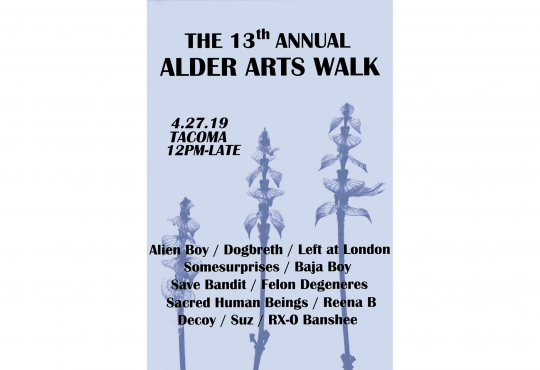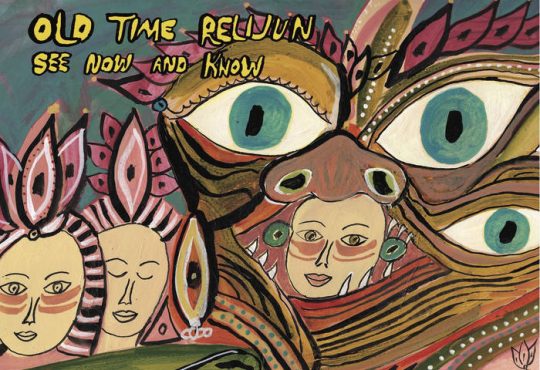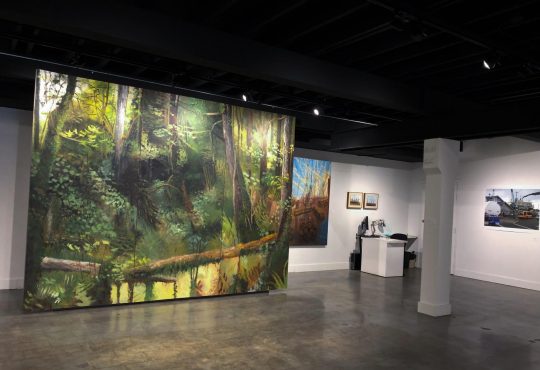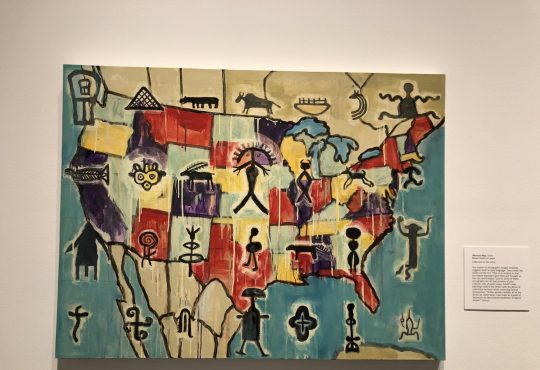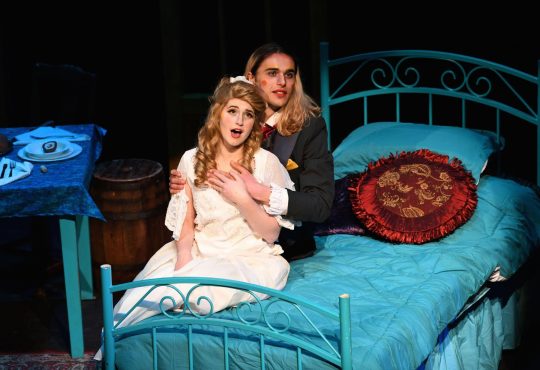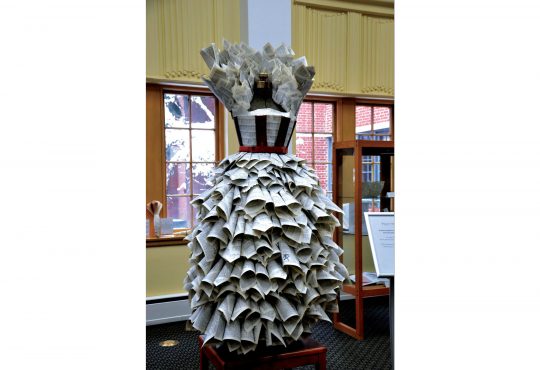
The first thing you see when you walk into Kittredge’s Hiroshige prints exhibit, titled “Traversing the Urban Landscape Through the Floating World of Japanese Prints,” are two seemingly identical pieces hanging up on the wall.
However, upon closer inspection, the eye can detect minute differences between the two pieces. The wall tag next to the works states that “these prints are a perfect example of how no two ‘original’ copies of a woodblock print are exactly the same.” While made from the same woodblock, the wall tag explains that the differences in the vibrancy and saturation of the color could be due to a variety of factors, such as the amount of pressure applied by the printer.
The exhibit was put together by three University of Puget Sound seniors — Sandra Brandon, Sarah Laurie Johnson and Lee Nelson — art history professor Zaixin Hong and Kittredge Gallery Manager Peter Stanley. In whole, the exhibit is made up of a lot more than meets the eye. It features an authentic woodblock found in a Tacoma antique store, a selection of 10 prints by Japanese artist Utagawa Hiroshige and a demonstrative video.
The woodblock has an image carved into it that is then covered in ink and printed onto a piece of paper.
“After finding it, I contacted my Japanese scholars and they looked at it and it was a historical piece because the content is very relevant. It is a book about floral arrangement,” Hong said.
A major focus of the exhibit is Japanese ukiyo-e artists’ interest in the urban landscape, ukiyo-e art in general, and the artistic movement Japonisme. “The prints are all ukiyo-e, which means sad-life. They’re all reminiscent of the floating world, which is the other translation of ukiyo-e. The artists were attempting to capture the landscape and people, and they focused on common people instead of just painting governmental officials or stuff like that so it’s supposed to just capture life,” Nelson said. “They’re always really pretty though, so it’s always a prettied view of some sort,” he admitted.
The origins of the 10 prints on display are shrouded in mystery. They were all done by Utagawa Hiroshige, a master of the ukiyo-e print tradition who worked during the early to mid-19th century. “We figured out the name of the donor but we don’t really know where they came from before that,” Nelson, one of the University of Puget Sound seniors who worked on the exhibit, said.
The prints were donated by Magdalena Maher Shelton to the University of Puget Sound in 1999. They were found by librarians and given to Stanley, who then contacted and collaborated with Hong and his students to make the exhibit happen.
“Two semesters ago Peter informed me that our library found the 10 pieces and then the library handed them over to the gallery,” Hong said. “Peter asked whether we can work together to use this set of prints as part of the art history course and part of my Japanese art class. The timing is perfect,” he said.
Hong is referring to Art History 492: Curatorial/Art History Research Practicum, a quarter-unit class that runs every spring. The three students chosen for the class this spring were awarded the opportunity to work directly with the Hiroshige prints in order to put the exhibit together.
The three students allowed to enroll in the class were handpicked by Hong and had to go through an application process that involved an interview with him. The class met one hour a week and followed Stanley’s schedule.
“Peter had very clear deadlines so our second week we had the text deadline and by the third week we had the timeline done,” Hong said.
Nelson confirmed that keeping up with all of the deadlines was one of the most difficult aspects of the class. “The biggest obstacle was definitely just the timeline of getting it all done just because it approached really fast and we had a lot of due dates within the first week already,” he said.
The class started at the same time that the spring semester did, but because the exhibit was scheduled to be up by March 11, the students had just a little bit over two months to get everything ready.
“Working within those time constraints and also meeting only once a week as well was kind of difficult,” Nelson said.
The exhibit will be up until April 20 and can be viewed during Kittredge’s daily hours, 10 a.m. to 5 p.m. Monday through Friday and 12 to 5 p.m. Saturday.

